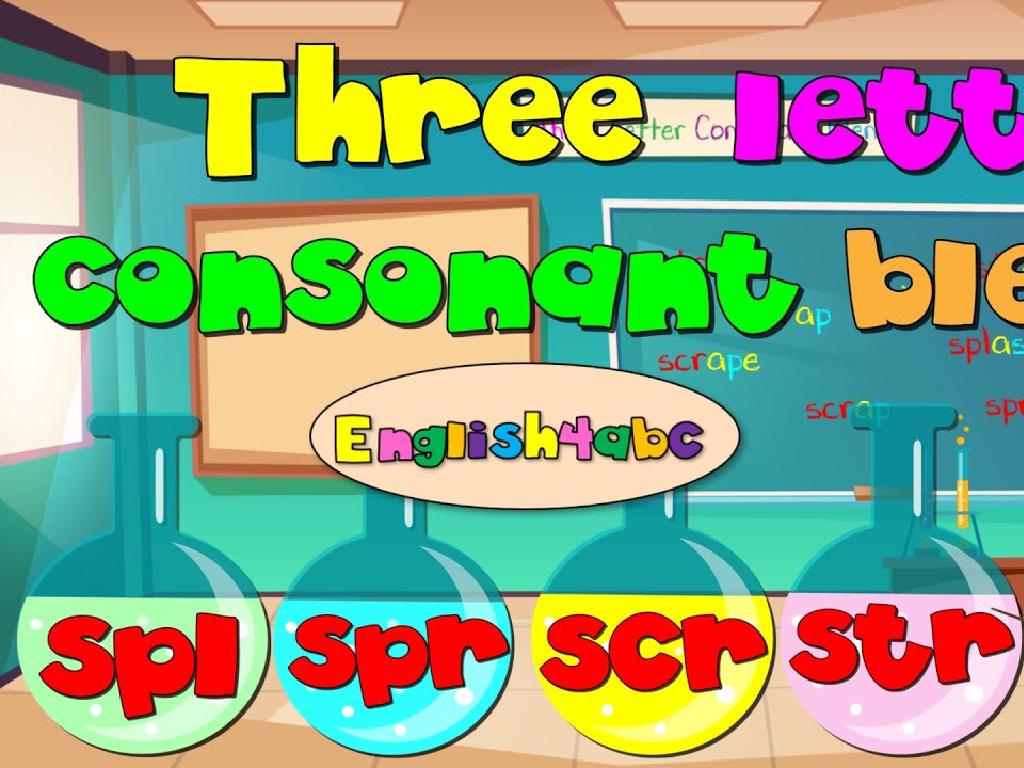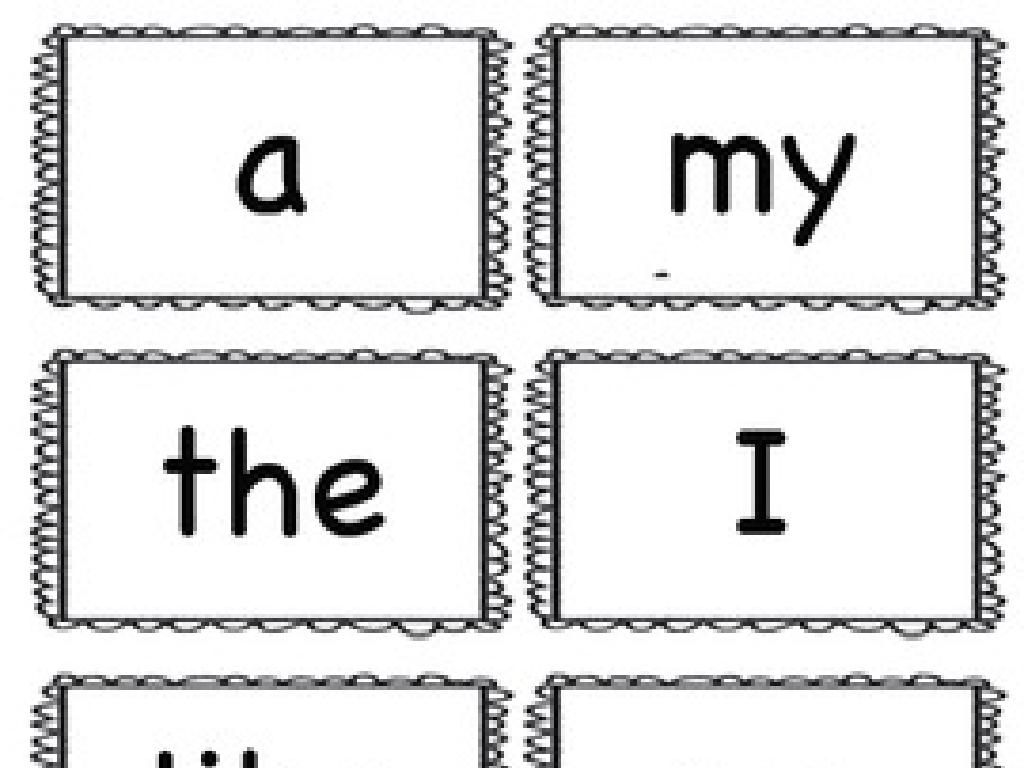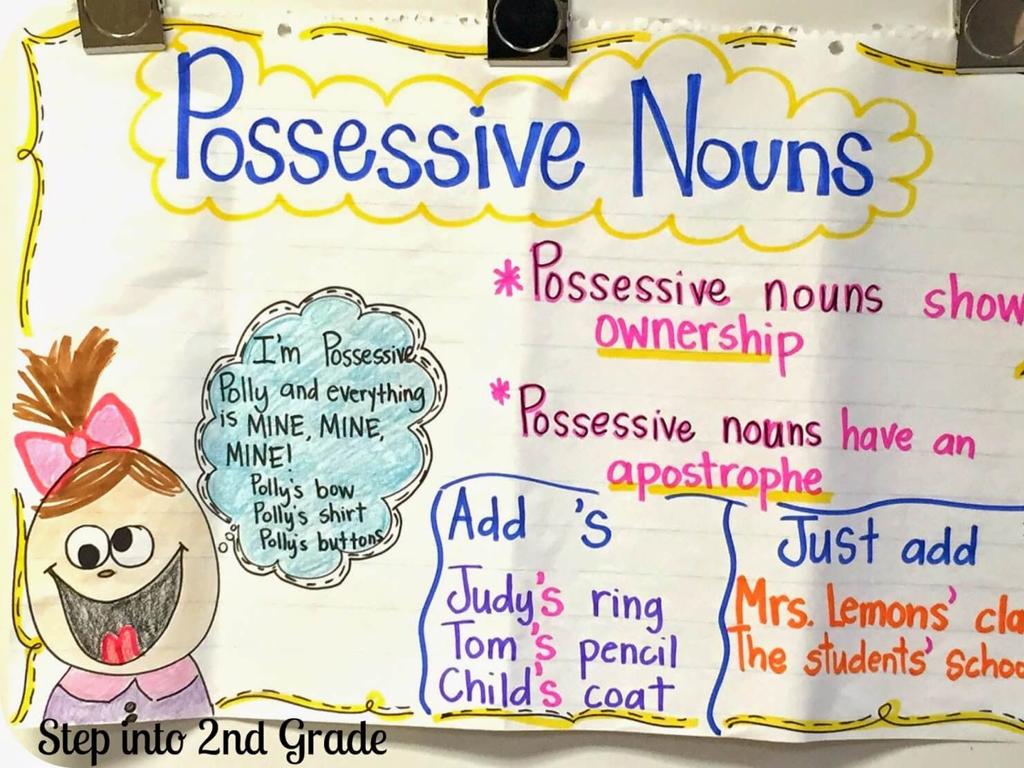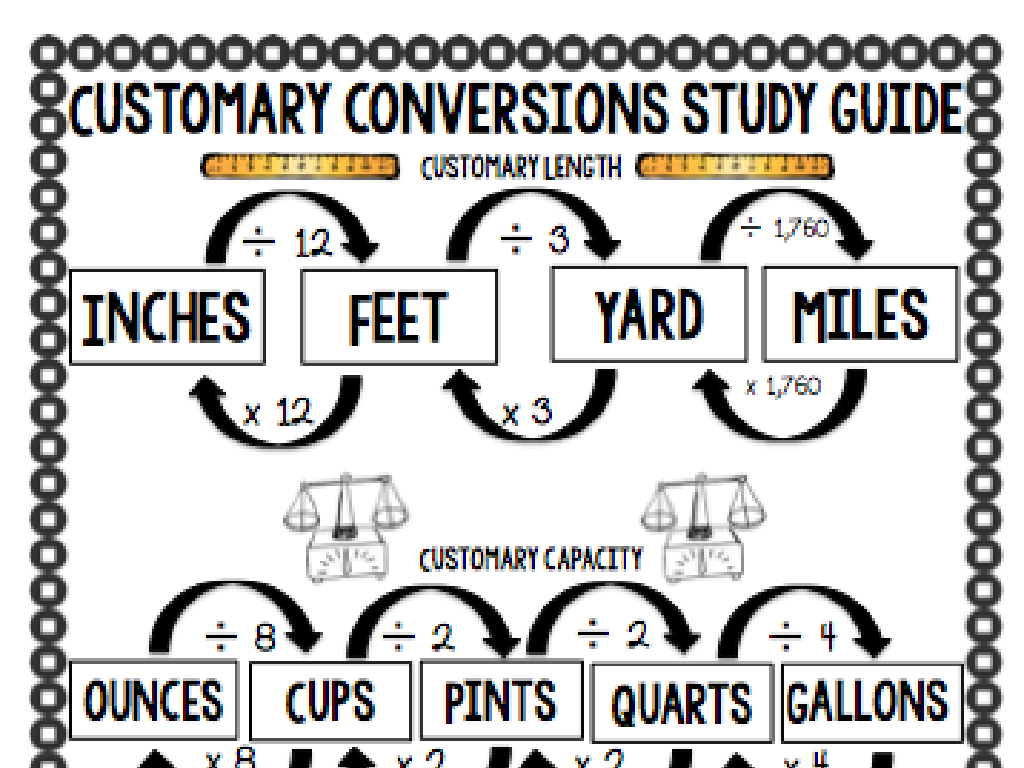Interpret Frequency Charts
Subject: Math
Grade: Fourth grade
Topic: Data And Graphs
Please LOG IN to download the presentation. Access is available to registered users only.
View More Content
Interpreting Frequency Charts
– What is a frequency chart?
– It’s a table that shows how often things happen
– Reading data is a key skill
– Frequency charts in daily life
– Like in weather reports or to track daily tasks
– Class discussion on chart usage
– Think about times you’ve seen graphs or charts
|
Begin the lesson by introducing frequency charts, explaining that they are tables used to display the number of times something occurs. Emphasize the importance of reading data, not just in math class but also in everyday life, such as in weather reports or keeping track of daily activities. Engage the class by asking them to share their experiences with graphs and charts, which will help them connect the concept to the real world. This discussion will also serve to assess their prior knowledge and make the learning experience more relatable.
Understanding Frequency Charts
– What is a frequency chart?
– It’s a visual tool for counting how often things happen.
– Counts occurrences of events
– Each event or category is tallied up.
– Example: Classroom pets chart
– If 5 classmates have dogs, and 3 have cats, we chart this.
– How to read the chart
|
A frequency chart is a visual representation used to display the number of times an event or category occurs. This slide introduces the concept by defining a frequency chart, explaining its purpose, and preparing students to look at an example. The example provided could be a chart showing the types of pets students have in the classroom. This will help students understand how to tally and visualize data. The teacher should guide students through the process of creating a frequency chart, using real-life classroom data to make the concept relatable and easier to grasp. Encourage students to think of other examples where frequency charts could be useful.
Interpreting Our Favorite Fruits Chart
– Chart shows class’s favorite fruits
– Each fruit has a student count
– Find the most popular fruit
– Look for the fruit with the highest number
– Count to determine popularity
– Use counting skills to compare numbers
|
This slide introduces students to the concept of frequency charts using a relatable example: favorite fruits of the class. The chart lists various fruits and the number of students who prefer each one. The task for the students is to identify which fruit is the most popular by counting the frequency of each fruit. This exercise will help them understand how to interpret data and draw conclusions from frequency charts. Encourage the students to discuss why it’s useful to know which fruit is most popular and how this information can be used, for example, when deciding what fruit to bring for a class party.
How to Read Frequency Charts
– Understand chart categories
– Categories represent groups like types of fruit.
– Identify the highest count
– The most frequent category has the tallest bar or biggest number.
– Spot the least popular item
– Look for the category with the smallest count.
– Practice with fruit chart
– Use a chart of fruits to find which is least popular.
|
This slide is aimed at teaching students how to interpret frequency charts. Start by explaining that a frequency chart is a tool that shows how often something occurs. Guide the students to look at the different categories on the chart and notice the counts next to each one. The category with the highest count is the most common or popular. Conversely, the category with the lowest count is the least common or popular. To make this interactive, use an example of a frequency chart with different fruits as categories. Ask the students to identify the most and least popular fruits based on the chart. This will help them understand how to read and interpret data visually. Encourage the students to ask questions and discuss their findings.
Creating Our Frequency Chart
– Time to make your own chart!
– Count the colored blocks
– How many blocks of each color can you find?
– Each color is a chart category
– Blue, red, green, etc. will be separate groups
– Record your counts carefully
– Tally the blocks in each group on your chart
|
This slide introduces a hands-on activity where students will apply their knowledge of frequency charts by creating one with tangible items – colored blocks. The teacher should distribute an equal number of various colored blocks to each group of students. Students will then count the number of blocks for each color and record the data on a chart. This activity will help solidify their understanding of categorizing data and representing it visually. The teacher should circulate the room to assist and ensure students are correctly tallying and categorizing the blocks. After the activity, discuss the results with the class to reinforce the concept of frequency and how it is represented in a chart.
Interpreting Our Chart: Frequency Analysis
– Review the class-created chart
– Discuss most & least frequent colors
– Talk with a classmate about your observations
– Reflect on color frequency reasons
– Think about why some colors appear more or less
– Share findings with the class
|
This slide is designed to engage students in a class activity where they will apply their understanding of frequency charts. Begin by reviewing the chart created together as a class, ensuring that all students are clear on what the chart represents. Encourage students to turn to their neighbors and discuss which color appears most and least frequently on the chart, promoting the use of mathematical language and reasoning. Ask them to think critically about the reasons behind the frequency of certain colors, considering factors such as popularity or availability. After the discussion, have a few pairs share their thoughts with the entire class to foster a collaborative learning environment. This activity will help solidify their understanding of interpreting data from frequency charts.
Frequency Chart Practice: Favorite Books Survey
– Review a new favorite books chart
– Partner up to discuss chart questions
– Choose a classmate and work together
– Answer questions using the chart
– Use the chart to find answers about book preferences
– Share findings with the class
|
This slide is designed to facilitate a class activity that involves interpreting frequency charts. The students will be given a frequency chart based on a survey about favorite books. They are to pair up with a classmate to collaboratively analyze the chart and answer a set of questions. This activity aims to reinforce their understanding of how to read and interpret data from frequency charts. The teacher should prepare a frequency chart in advance and create a worksheet with questions that guide students to explore the data. Possible activities could include identifying the most popular book, comparing the number of votes for different books, and discussing why certain books might be more popular than others. After the activity, students will share their answers and discuss their findings with the class, providing an opportunity for peer learning.
Class Activity: Survey and Frequency Chart
– Conduct a survey on recess favorites
– Create your frequency chart
– Tally the results and organize them into a chart
– Present your chart to the class
– Explain your survey findings
– Share what the chart shows about our favorite activities
|
In this interactive class activity, students will engage with their peers to conduct a survey about favorite recess activities. They will then use the collected data to create their own frequency charts, which will help them visualize the data they’ve gathered. Once the charts are complete, students will present their findings to the class, explaining what the data tells us about the group’s preferences. This activity will not only help students understand how to interpret frequency charts but also give them practical experience in data collection and presentation. For the teacher: Prepare a list of common recess activities for the survey, guide students on how to tally and create a frequency chart, and provide support during the presentations. Consider having chart paper or graphing software available for students to use.
Review: Frequency Charts
– Recap on frequency charts
We learned how to read and create charts that show how often things happen.
– Uses of frequency charts
They help us quickly see patterns and compare data in different categories.
– Open floor for questions
– Share your thoughts!
|
This slide aims to consolidate the day’s learning about frequency charts. Begin by asking students to summarize what they’ve learned about frequency charts, including how to interpret and construct them. Discuss the importance of frequency charts in visualizing data, making comparisons, and identifying trends. Open the floor for any questions the students might have, providing clarification where needed. Finally, encourage students to share any insights or interesting observations they made during the lesson. This interactive review will help reinforce their understanding and ensure they are comfortable with the concept of frequency charts.
Homework: Exploring Frequency Charts
– Congratulations on today’s work!
– Find a frequency chart for homework
– Look in newspapers or online for a chart
– Bring the chart to our next class
– Get ready to present your chart
– Think about what the chart shows and how to explain it
|
This slide wraps up the lesson and assigns homework to reinforce the day’s learning. Students are tasked with finding a frequency chart, which could be from various sources such as newspapers or the internet. This activity is designed to help students apply their knowledge in a real-world context and to develop their presentation skills. Encourage them to look for charts that interest them, as this will make the exercise more engaging. Remind them to consider what the data in the chart represents and how it is organized. In the next class, students will have the opportunity to explain their charts, which will help them practice interpreting data and communicating their understanding to others.






